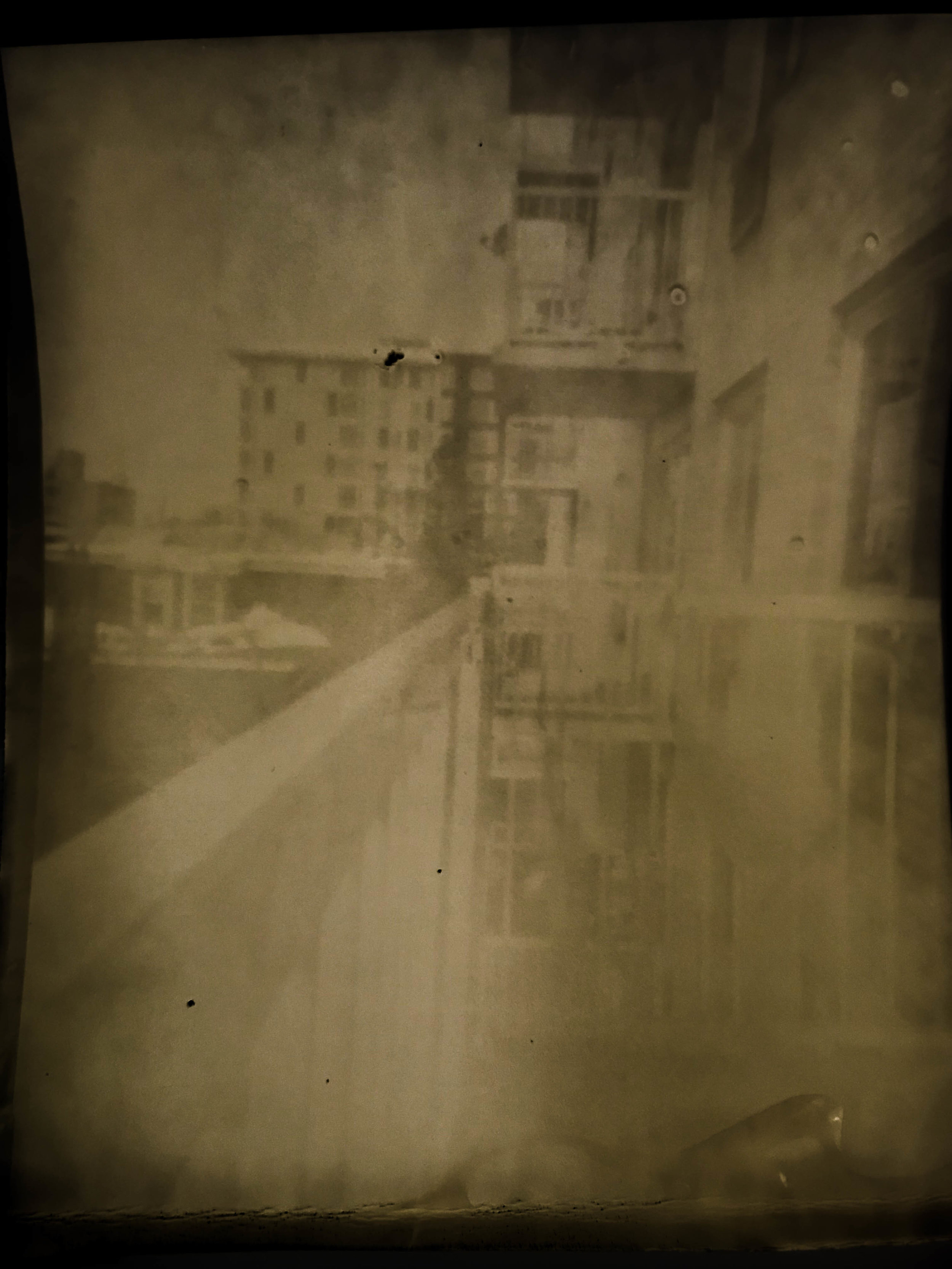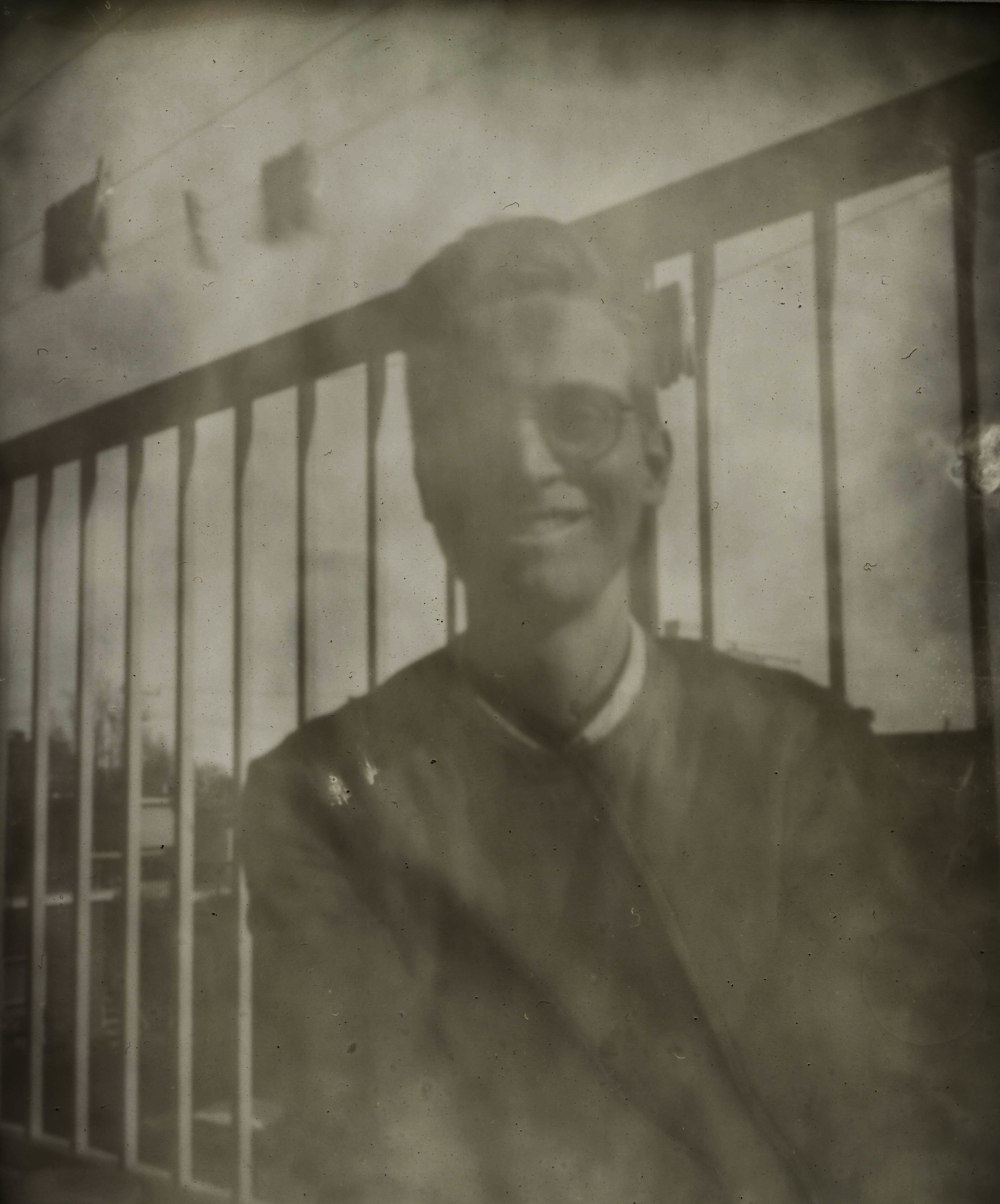After enlarging a few dozen film slides last year, I was left with a box of decent darkroom paper sitting on a shelf. Since I no longer have access to an enlarger, I figured I should find at least some use for the papers. So, as part of an ongoing theme of ‘simplification’ of photography, I built a rudimentary pinhole camera.
The camera is built from construction paper, duct tape, and bamboo skewers. To make the pinhole, I slowly broached a piece of an aluminium drinking can with a sewing needle. The shutter is a small flap of paper I slide up and down across the pinhole.
For this project, I also wanted to make my own developing liquid, so I followed a similar caffenol recipe that I used in developing my super8 movie. I encountered a lot of problems with pinpointing the strength of the developer, as it tapers off in strength as it is used. The first prints were almost always over-developed, while the latter prints could take 5 minutes or more to fully develop. You can really see this when comparing the two images of the potted plant in the window. The only difference between the two images was what order they were developed in the developer. The contrast and caffenol staining is so much stronger in the first, compared to the second.
The following images are the rough first attempts at pinhole photography. One of the most difficult things about a totally DIY approach is knowing what metric to change to improve. This testing had variables in the pinhole quality, light leaks, exposure time, ambient lighting, developer strength, developing time, and many others, so trial and error was really the name of the game.












